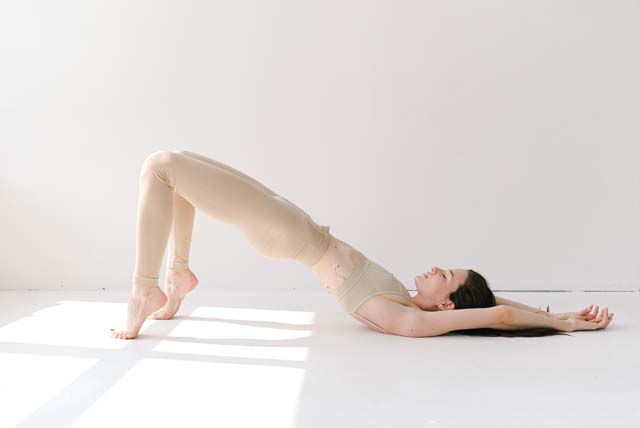The Bandhas and the Granthis

Bandhas are inner body locks that engage both the physical and the energetic body. They provide inner support during asana practice, stimulate the flow of prana and help to release the granthis, which can be understood as energy blockages or psychological knots.
By combining the action of opposing muscles, the bandhas can be activated. Their use during asana practice increases strength, stability and mental focus. Their use during pranayama intensifies its cleansing effect by directing agni or the internal fire to burn the waste matter that has settled and blocks the flow of energy.
Often referred to as locks, the bandhas help to balance two important energies within the body: the prana vayu and apana vayu. If prana is associated with drawing in that which nourishes us, apana is associated with letting go of that which is potentially toxic.
Prana is connected to the inhalation and apana to the exhalation. The meeting of these two opposing energies at the base of the spine awakens the Kundalini energy.
Often referred to as locks, the bandhas help to balance two important energies within the body: the prana vayu and apana vayu. If prana is associated with drawing in that which nourishes us, apana is associated with letting go of that which is potentially toxic. Prana is connected to the inhalation and apana to the exhalation. The meeting of these two opposing energies at the base of the spine awakens the Kundalini energy.
There are three main bandhas: Jalandhara, Uddiyana and Mula bandha. Activating all three of these bandhas at the same time is referred to as Maha bandha or main lock.
- Jalandhara Bandha: the throat lock. Jalandhara bandha can be applied by contracting the front muscles in the neck when tucking the chin towards the sternum. This bandha is naturally activated in some asanas like Sarvangasana (Shoulder Stand) or Halasa (Plough Pose). It is subtly activated during Ujjayi pranayama in which the glottis (the area where the vocal cords are located) is gently contracted.
This bandha focuses the mind on the fifth or throat chakra and contains the upward-flowing movement of prana past the throat. It also seals off the downward movement of “nectar” from the sahasrara or crown chakra, which is said to preserve youth and vitality. - Uddiyana Bandha:the abdominal lock. Uddiyana bandha is applied by contracting the upper abdominal muscles (just below the solar plexus). This bandha is naturally activated after each exhalation when the lungs are emptied and the diaphragm rises. During asana practice it is especially useful to apply this bandha to support the lumbar region in back bends. When used together with Mula bandha, it strengthens the abdominal muscles. While performing asanas it is not possible to fully engage this bandha as it would constrain breathing. This bandha focuses the mind on the third chakra and directs prana up towards the sixth chakra.
- Mula Bandha: the root lock. Mula bandha is applied by contracting the pelvic floor and elevating the inner organs in this region like the bladder and genitals. Other groups of muscles, like the upper leg adductors (by slightly pressing the knees together), can intensify this bhanda. If engaged during asana practice it is said to “provide an extra lift, which is especially useful when jumping”. This bandha focuses the mind on the first chakra, and directs prana from the pelvic region upwards, providing energy to the whole body and stopping it from flowing downwards out of the body.
Activating the bandhas can also help to unblock the three granthis or knots that prevent prana from freely circulating within the Sushuma nadi. These knots can block the chakras and keep us tied to negative attitudes and emotions, preventing us from fully experiencing the richness of life.
The Granthi
- The Bramha or Vital Granthi is associated with the first three chakras (root, sacrum and solar plexus). This granthi blocks us by feeding our attachment to physical comfort, material wealth and accumulation. It can be unblocked by activating Mula bhanda. To regulate the energy in these vital chakras and granthi, Patanjali recommends self discipline.
- The Vishnu or Love Granthi is associated with the fourth and fifth chakras (heart and throat). This granthi blocks us by feeding our attachment to emotional excitement, self-centeredness and lack of receptivity to others’ needs. It can be unblocked by activating Uddyiana bandha. To boost the energy of the love chakras and granthi, Patanjali recommends devotion and commitment.
- The Rudra or Light Granthi is associated with the last two chakras (third eye and crown of the head). This granthi blocks us by feeding our attachment to our opinions, prejudices, fantasies and intellectual pride. It can be unblocked by activating Jalandhara bandha. To dissolve pride and “dark” mental patterns, Patanjali recommends self-knowledge.
